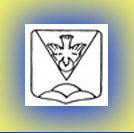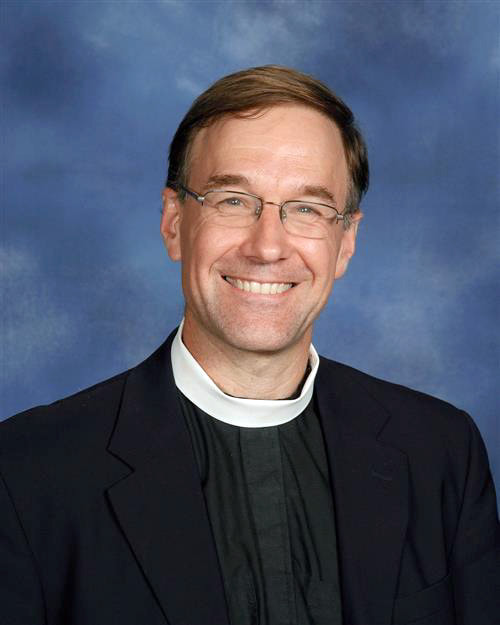|
For the last several weeks, we have been working through the first chapter of Mark’s Gospel and the beginning of Jesus’ public ministry. Today we jump to a little past the halfway point in the Gospel and to near the end of Jesus’ ministry. Soon after the dramatic story we just heard, Jesus and his disciples will begin their final journey to Jerusalem. We’ll pick up that story when we reach Holy Week.
But first we have the Transfiguration, which is always the Sunday before the start of Lent. Jesus takes Peter, James, and John up a high mountain, where his appearance changes. Mark tells us that Jesus’ clothes become dazzlingly white, whiter than anyone could ever bleach them. In my imagination, I fill in this picture a bit more. I imagine Jesus getting larger, maybe ten feet tall, and with his face radiating divine power. Probably that is just my imagination. But the basic point is accurate enough. There on the mountain, Jesus’s divinity is shining through in a way that it has not previously done and won’t do again until his resurrection. But the detail in this extraordinary scene that puzzles me is the cloud. Moses and Elijah, two of the greatest heroes from Israel’s ancient past, are speaking with Jesus. Peter is babbling, which is both typical and also understandable. And then, Mark tells us, “a cloud overshadowed them.” When the cloud lifts, Moses and Elijah are gone, and Jesus is back to normal. Jesus and his disciples come down the mountain and resume their hectic life of ministry. You could argue that appearance of the cloud is the climax of the whole scene. What’s that all about? The Church Fathers LOVED this whole scene, and had a lot to say about it. They don’t all agree on everything, but they do agree that the cloud is the Holy Spirit, which makes good sense. Jesus is there, shining with his own divinity. We have the Father, who speaks from the cloud declaring Jesus to be the very Son of God. That leaves the Holy Spirit, the cloud. But why does the Spirit appear as a cloud? The closest parallel to the story of the Transfiguration is Jesus’ baptism. It’s also a trinitarian scene. There, too, we have a voice from heaven proclaiming Jesus as the Son of God. But at Jesus’ baptism, the Holy Spirit appears as a dove. A dove makes sense to me. (As an aside, the Holy Spirit also appeared as a dove to Saint David, our patron, in his most famous miracle. David was preaching to a large crowd. Many of them couldn’t hear David, so God raised up a hill under David as a kind of platform and, at the same time, the Holy Spirit descended on David in the form of a dove. That’s why our banner, here behind me, has hills and a big dove. The Saint David’s window at the entrance of the Church building has the same elements.) But no dove in our reading for this morning. Here the Holy Spirit appears as a cloud. I say again, why a cloud? What is the lesson here for the disciples, and by extension for us? I gained a little insight on this last week. Carrie and I spent the week in Shelburne Falls doing winter outdoors stuff. I left the downhill skiing to her. But for what amounts to the first time in my life, I did some snow hiking, cross country skiing, and snow shoeing. We threw in a little ice skating as well. Needless to say, this Georgia man is glad to be home. We did these vigorous things, in cold weather, with a pandemic mask on our faces, which meant that I spent a lot of time in my own personal cloud. For a week, I peered at the world through fogged and misted glasses. And here is what I learned about life in a cloud. You can’t see very well. But that tends to really focus your attention, particularly when you are moving, especially if you are moving in a way that you aren’t very comfortable with—say, skating. When my glasses were fogged and I was skating, I wasn’t distracted by anything around me, not even the beautiful scenery. I was focused, and I mean focused, on what was right in front of me. In one instance, what was right in front of me was Carrie. As we were heading back to our little apartment, we approached a road crossing. It was a big road for the area, and cars were moving fast. As we walked up, we could see an opening in the cars, so we planned to walk straight across without stopping. But because there were other pedestrians waiting at the intersection, I dutifully pulled up my mask. The mist came down. By the time I set foot on the road, I was basically blind. It is unnerving to be in a major intersection and unable to see more than a couple of feet! In a panic, I told Carrie I couldn’t see. She told me to follow her. She led me safely across the road. That was the lesson to Jesus’ disciples in the Transfiguration. That’s what the cloud was forcing them to do: focus on Jesus. At the time, the disciples needed a little focusing. In the immediately preceding episode, Jesus warned them that he would be crucified. Peter “took Jesus aside and began to rebuke him” (8:32). Rebuking Jesus doesn’t turn out to have been a good plan. So, in our reading Jesus puts on a display of power. This is not a person you want to rebuke! Now, picture the scene in your head. Jesus with his dazzlingly white clothes, Moses and Elijah there with him. Suddenly the cloud descends, obscuring everything. Everything, that is, except Jesus, who must have shimmered whitely in the cloud. The cloud forced the disciples to focus on Jesus by covering everything else, just like the mist on my glasses forced me to focus on Carrie and my next step. That’s what the Holy Spirit does, no matter what form the Holy Spirit takes: point us to Jesus. On the mountain two thousand years ago, the Holy Spirit blinded Peter, James, and John to everything but Jesus. Normally the Holy Spirit doesn’t blind us in the same way. But the Holy Spirit continues to point us to Jesus. As Paul says, the Holy Spirit shines “in our hearts to give the light of the knowledge of the glory of God in the face of Jesus Christ.” And the lesson for us is, look to Jesus. Especially when you can’t see your way forward, stick close to Jesus. If need be, ignore everything else around you to keep focused on Jesus. In the midst of a pandemic that won’t go away, and financial anxieties, and political divisions, and a rising tide of anxiety and fear and anger, pay attention to Jesus. We can’t ignore the world around us, of course. But we also can’t let the world around us distract us from following Christ. Because Jesus is the only one who will surely lead us to where we need to go. So here is my invitation to each of you, as we prepare to head into Lent. Prayerfully reflect on ways you can reduce the distractions in your life and focus a little more closely on Jesus. And ask God to send the Holy Spirit to help you. I end with thanks to God for the gift of the Holy Spirit who helps us to see Christ more clearly. In Jesus’ name. Amen.
1 Comment
Mary Moore
2/15/2021 02:16:44 pm
What a sweet story about Carrie guiding you across the street - also a good reminder that we are not in this alone; we should help each other as necessary and when possible.
Reply
Leave a Reply. |
Rector
Rev. Dr. Harvey Hill Third Order Franciscan Archives
July 2024
Categories |


 RSS Feed
RSS Feed
